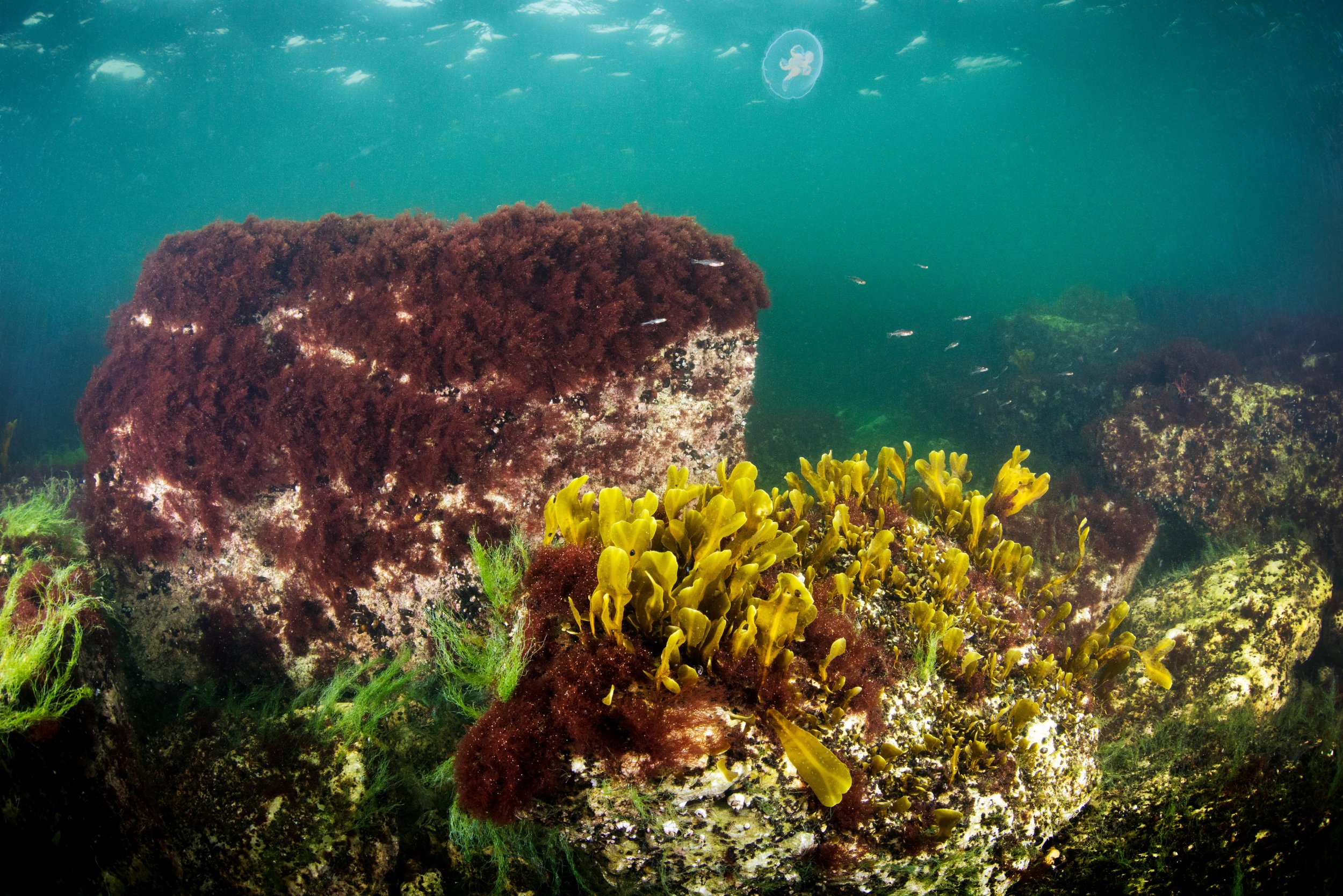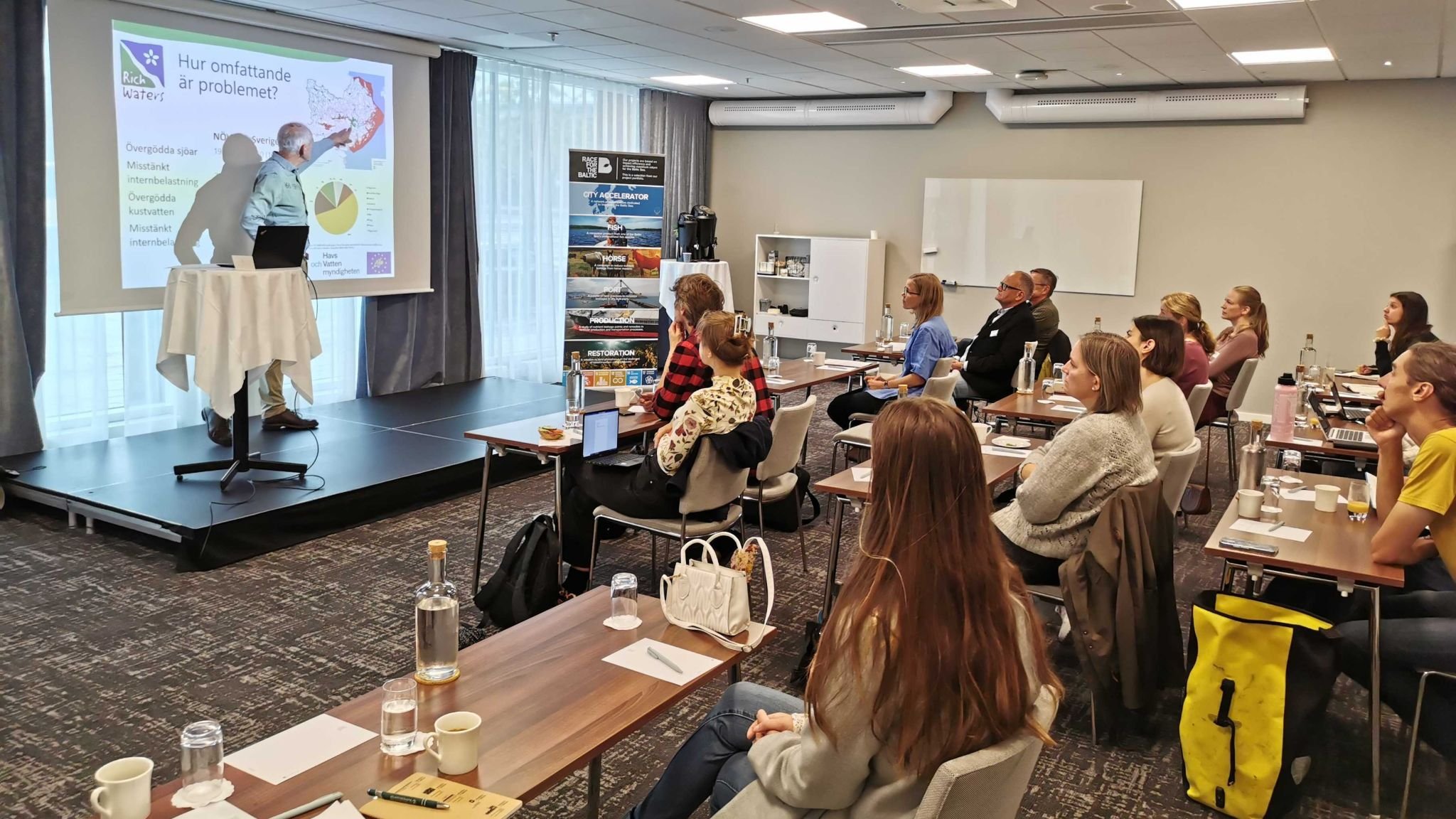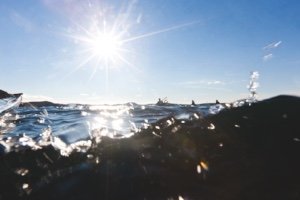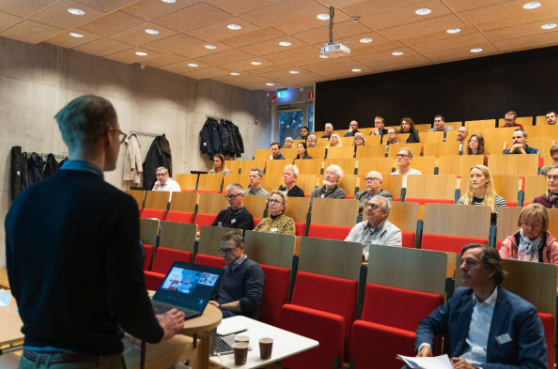
Restoration
Reducing internal load in coastal waters using minerals
The primary issue in the Baltic Sea is nutrient overload, particularly phosphorus. This excess phosphorus promotes excessive vegetation growth, which depletes oxygen during decomposition. This process ultimately results in oxygen-depleted "dead zones" on the sea floor. So far, actions have mainly focused on reducing the inflow of phosphorus, but as this inflow is reduced, it also becomes more relevant to reduce the amount of phosphorus that is already available in the water.
There are several ways to reduce this excess. One of these is to add calcium, iron, or aluminium – substances that naturally bind to phosphorus. Adding these substances helps the natural sedimentation of phosphorus to the bottom and thus "neutralises" the free-flowing phosphorus. Today, there is a gentle and cost-effective treatment for this which has been used in lakes around the world. The treatment also generates a significantly better water quality within just a few days which is important to increase the commitment to the continued work for a healthier sea.
The Restoration project aimed to assess the effectiveness of phosphorus-binding treatments in coastal environments. and increase the use of this treatment by spreading knowledge about its features. As part of this effort, we contributed a research component to the Integrated LIFE-project Rich Waters.
Project Activities
We have highlighted a promising technique that permanently binds phosphorus in sediment using aluminium chloride.
We have met with all relevant municipalities in Sweden to make sure they have the treatment in their palette of measures and put them in contact with experts if they have any questions.
We have collaborated with technology providers and researchers to expand the method for use in the Baltic Sea's coastal environments. This includes partnerships with Life IP Rich Waters and The Swedish University of Agricultural Sciences for measurements and analysis, particularly the impact of water exchange on long-term treatment effects.
We have ensured criteria for treatment are met, such as sufficiently reducing phosphorus inflow from land sources like stormwater drains.
We have encouraged water owners to use this method as a complementary or final measure to address internal phosphorus loading.
We have contributed to a handbook focusing on internal loading and how to address this with the best available techniques and methods.
Status
The project is ongoing.
Project Goals
The goal of the Restoration project was to deepen knowledge about aluminium treatments in coastal areas, educate politicians and municipalities on aluminium treatment as a measure against internal loading, and contribute to decisions on treatments that bind a total of 20 tons of phosphorus.
Achieved Results
3 workshops with municipalities (Blekinge, Uppsala, Nyköping).
Secured funding through LOVA grants and co-financing from the Life IP project via The Swedish University of Agricultural Sciences.
Started a measurement project within Life IP Rich Waters /LOVA, thereby participating in the EU project and launching the handbook and white paper on phosphorus management.
Initiated the treatment process in several municipalities.
Project Partners
The partners in the project are LIFE IP Rich Waters, The Swedish University of Agricultural Sciences, The Swedish Agency for Marine and Water Management, Vattenresurs AB.
Funding
The project received various grants and contributions, including a 1.1 MSEK grant from Lokala vattenvårdsprojekt (LOVA), with additional support from the Swedish University of Agricultural Sciences and The Swedish Agency for Marine and Water Management.
Sustainable Development Goals
The project addresses SDG 6 (clean water), SDG 14 (life below water) and SDG 17 (partnership for the goals).
For more information about the Restoration project, please contact:
Fanny Tham-Ratz
Related news













